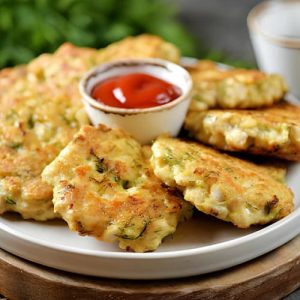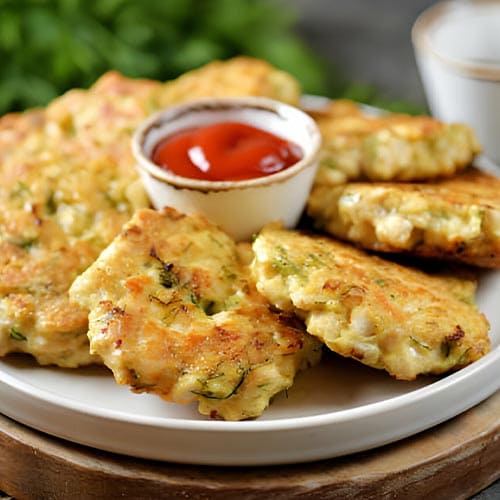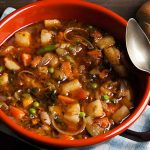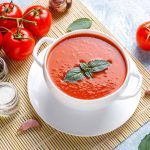Introduction to Chicken Patties
Chicken patties, a beloved food item worldwide, are renowned for their versatility and flavor. These patties, typically made from ground chicken, serve as a key ingredient in various culinary delights, ranging from casual fast-food to sophisticated dishes. However, the quality of chicken meat can be significantly impacted by a condition known as woody breast (WB). This phenomenon, increasingly observed in chicken meat, is characterized by its tough texture and abnormal hardness. WB has become a notable concern in the poultry industry, not only affecting the sensory qualities of chicken products but also posing challenges in meat processing and consumer satisfaction. Understanding WB and its implications is crucial for maintaining the high standards of chicken patty quality that consumers expect.
Woody Breast in Chicken Patties
Woody breast (WB) is a condition affecting chicken meat, particularly the breast muscles, leading to a harder, wood-like texture. This abnormality in chicken meat has raised concerns regarding:
- The overall quality of chicken patties, as WB can significantly alter the texture and taste.
- The processing and culinary applications of chicken meat, as WB meat behaves differently than normal chicken meat during cooking and preparation.
The global poultry industry faces a significant challenge due to WB. It affects a substantial portion of chicken meat, leading to potential economic losses and a need for adjusted processing techniques. The industry is actively researching ways to manage and mitigate the impact of WB, striving to ensure that chicken patties and other chicken products meet the high-quality standards expected by consumers worldwide.
Preparation and Analysis of Chicken Patties with WB
In addressing the challenges posed by WB, a comprehensive approach to the preparation and analysis of chicken patties is essential. The process involves:
- Preparing chicken patties with varying levels of WB inclusion, ranging from no WB to complete WB.
- Employing advanced methodologies such as Low-field Nuclear Magnetic Resonance (NMR) for assessing the water distribution in the meat, which is a critical factor in understanding the texture and quality of the patties.
- Determining the TBARS value, a measure of lipid oxidation, which is crucial for assessing the freshness and shelf-life of the patties.
- Analyzing protein oxidation, which can significantly impact the texture and flavor of the chicken patties.
Through these methods, researchers can gain valuable insights into how WB affects the quality of chicken patties, leading to better strategies for processing and improving the overall quality of chicken products.
Quality Assessment of Chicken Patties
The quality of chicken patties is significantly influenced by the level of woody breast (WB) meat used. Key factors in this assessment include:
- Lipid and Protein Oxidation: The presence of WB affects the rate of lipid and protein oxidation in chicken patties. Higher levels of WB tend to increase oxidation, which can impact the flavor, texture, and shelf life of the patties. This oxidation is a crucial parameter in determining the overall quality and acceptability of the chicken patties.
- Fry Loss and Color Parameters: Fry loss, the weight loss during cooking, is another important quality indicator. Patties with higher WB content generally show increased fry loss, leading to a drier texture. Additionally, the color of chicken patties, both external and internal, can be altered by the presence of WB, affecting their visual appeal.
- Texture Profile Analysis (TPA) and Sensory Evaluation: TPA provides a detailed understanding of the texture characteristics of chicken patties, such as hardness, chewiness, and springiness. Sensory evaluation, involving taste tests by trained panelists, further assesses the impact of WB on the overall sensory quality of the patties, including flavor, texture, and mouthfeel.
Understanding these quality parameters helps in optimizing the production and ensuring the consumer satisfaction of chicken patties.
Optimal Application of WB in Chicken Patties
Determining the optimal inclusion rate of WB in chicken patties is crucial for maintaining quality while minimizing waste. The key considerations include:
- Balancing Quality and Yield: Finding the right balance between the amount of WB meat used and the desired quality of the patties is essential. A certain level of WB can be included without compromising the overall quality, thus reducing waste and cost.
- Economic and Practical Considerations: From an economic standpoint, effectively utilizing WB meat in chicken patties can reduce losses for poultry producers. However, it’s important to consider the processing adjustments and potential need for additional ingredients to maintain the quality of the patties.
The goal is to create a product that meets consumer expectations in terms of taste and texture while being economically feasible for producers.
FAQs
Addressing common questions and concerns about chicken patties and WB:
What is Woody Breast (WB) and how does it affect chicken patties?
- WB is a condition in chicken meat characterized by a tough, wood-like texture. It can affect the texture, flavor, and overall quality of chicken patties.
Can chicken patties with WB still be considered safe to eat?
- Yes, WB does not pose any health risks and is safe to consume. The main impact is on the texture and quality of the meat.
How can consumers identify WB in chicken meat?
- WB meat is firmer and has a more rigid texture compared to normal chicken meat. It may also appear paler and have a more pronounced grain.
Are there any ways to mitigate the effects of WB in chicken patties?
- Adjusting cooking methods and recipes, such as incorporating marinades or tenderizing techniques, can help mitigate the textural effects of WB in chicken patties.
Is WB a common issue in the poultry industry?
- WB has become increasingly common in recent years and is a significant concern for the poultry industry due to its impact on meat quality.

Homemade Chicken Patties Recipe
Equipment
- Large mixing bowl
- Skillet or frying pan
- Spatula
- Measuring cups and spoons
Ingredients
- 500 g ground chicken
- 1 medium onion finely chopped
- 2 cloves garlic minced
- 1 egg beaten
- 1/2 cup breadcrumbs
- 1/4 cup grated Parmesan cheese
- 1 teaspoon salt
- 1/2 teaspoon black pepper
- 1/2 teaspoon paprika
- 1/4 teaspoon cayenne pepper optional, for a spicy kick
- 2 tablespoons fresh parsley chopped
- Olive oil for frying
Instructions
Prepare the Patty Mixture:
- In a large bowl, combine the ground chicken, chopped onion, minced garlic, beaten egg, breadcrumbs, Parmesan cheese, salt, black pepper, paprika, cayenne pepper (if using), and chopped parsley.
- Mix everything together until well combined. If the mixture is too wet, add a little more breadcrumbs.
Form the Patties:
- Divide the chicken mixture into equal portions, depending on the size of patties you prefer.
- Shape each portion into a round, flat patty.
Cook the Patties:
- Heat a few tablespoons of olive oil in a large skillet over medium heat.
- Once the oil is hot, place the patties in the skillet. Cook for about 5-7 minutes on each side or until the patties are golden brown and cooked through.
Serve:
- Serve the chicken patties hot. They can be enjoyed on their own, with a side of salad, or as a burger with your favorite buns and toppings.
Tips:
- For a healthier version, you can bake the patties in an oven preheated to 200°C (390°F) for about 20-25 minutes, flipping halfway through.
- Feel free to add other herbs and spices to the mixture according to your taste preferences.
- These patties can be made ahead of time and stored in the refrigerator for a quick meal during the week.
Notes
- For a gluten-free option, substitute breadcrumbs with a gluten-free alternative.
- Patties can be frozen before cooking. Thaw in the refrigerator overnight before cooking.
- Adjust the level of spices according to your preference. Add more cayenne pepper for spicier patties or omit it for a milder taste.
- If baking, line the baking tray with parchment paper for easy cleanup.






These are FABULOUS….I just made them and even though I didn’t have lemon zest I did add some lemon juice. I was looking for an appetizer for a dinner party, so I’ll make these small and they will be a hit with my family. I made a spicy sauce to dip them in and they were delicious!!! Thank you for sharing.
Great recipe, and so easy! I added some leftover mashed potatoes as well and the patties turn out fabulous. Two thumbs up!
We love making these in our house. They are so yummy with just a squeeze of lemon. We do brunch on Sunday’s and decided to use them in a Benedict today. They were extra delicious with the hollandaise.
Thank you so much for sharing this recipe it looks delicious l can’t wait to make them. I was wondering if I could substitute almond flour instead of all purpose flour ?
Thank you for the recipe. Not to be one of those people that makes a dozen changes to a recipe so that it ends up being a completely different dish we did make a change. Since we were using a left over smoked/barbecued chicken we decided to use pepper jack instead of mozzarella and omitted the dill. They turned out really well.
Yes 👍😍 Excellent recipe. Easy to prepare. Delicious. Enjoyed by 2yo to grandparents.
These look wonderful. I have a husband who hates cheese, any cheese. What would you suggest I do implace of the cheese.
just made these chicken cakes. Can they be forzen? and can they be reheated in the conventional oven?
I made these last night. Followed recipe except I shredded the rotisserie chicken in my food processor and subbed fresh parsley for cilantro (what I had in my garden). These were AMAZING!! Served w/your avocado corn salad and asparagus. Wow! Definitely will make again and again! Thx!
These chicken patties were AMAZING! My littles weren’t big fans, but I think it was the dill. Next time I might play around with a different flavor for them, but I absolutely LOVED them! So quick and easy, as well. Natasha, I am a huge fan of all of your recipes. Thank you for all that you do!